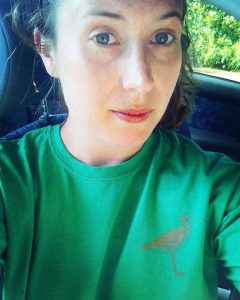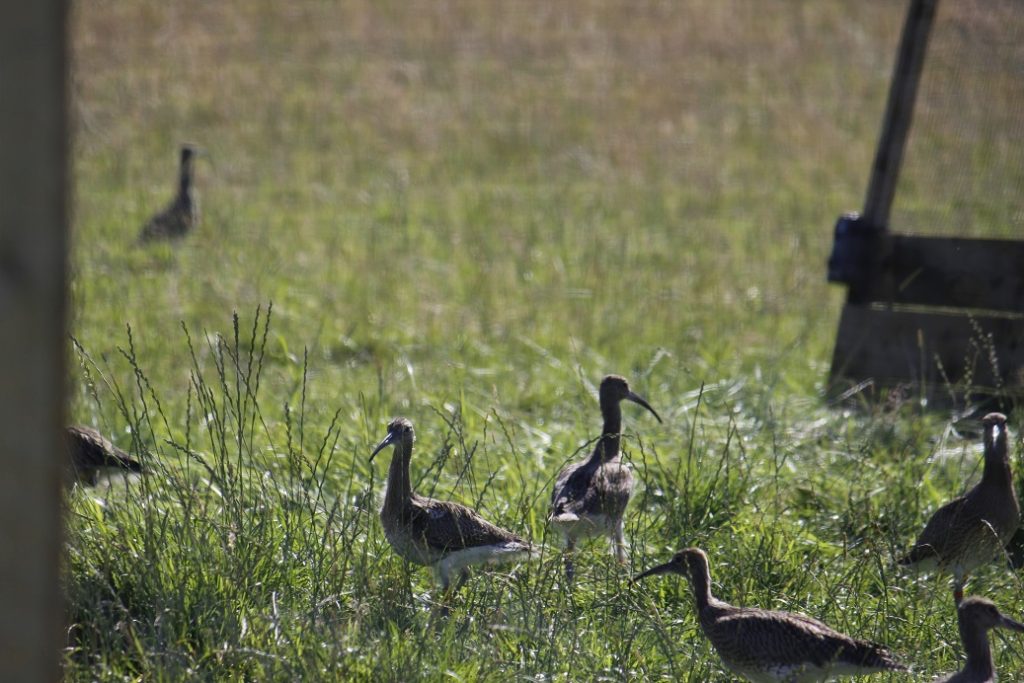Headstarting to help Curlew Conservation, by project officer Amber Bicheno
The call of the Curlew is instantly recognisable and hauntingly beautiful, and it is regarded by many as a herald of spring. The bubbling notes float and resonate throughout the hills and Valleys, as these revered waders return from their winter on the coast. We are very lucky to still be able to hear and see this spectacle, as in many places the Curlew is now lost. This is just one reason why I feel so privileged to work for Curlew Country, as it has offered me a unique opportunity to get to know these birds and glimpse into the more secretive areas of their lives.
I have spent the last few weeks preparing for this year’s headstarting efforts. Headstarting is the process of taking eggs from wild nests, incubating them artificially and releasing the resulting chicks once they are able to fly. We have reached this stage after 2 years of monitoring nests, with no successfully fledged chicks. The odds are stacked against the Curlew, with high numbers of generalist predators, changes in farming practices and even changes in climate all affecting their breeding success. Headstarting offers only a temporary solution, a means to boost the population and avoid a crash whilst these larger issues can be tackled.
Last year, for obvious reasons, was a write off. The team has spent time consolidating, planning and fundraising ready for the 2021 season to start, now only weeks away. Currently it feels like a waiting game, trying to be as prepared as possible for when those first beautiful, mottled eggs arrive into my care. Each one a work of art, with varying shades of greens, tans and deep chocolate brown, helping them to blend in with their grassy nest surroundings. Once they do, it will be all hands-on deck as I train up two headstarting trainees and a group of dedicated volunteers to assist with all things young Curlew.
 Luckily for us, the Curlew is a fairly hands-off sort of bird. Most of the parental effort goes into protecting the nest and chicks from would-be predators. Once hatched the chicks are straight up on their feet and out searching for food, all within 48 hours. They are never fed by their parents, only brooded occasionally and warned of incoming danger when they will instinctively huddle down into the undergrowth. This makes life a little easier for us headstarting, as no hand-feeding is required, however they still need regular food and water changes to ensure they stay healthy and happy.
Luckily for us, the Curlew is a fairly hands-off sort of bird. Most of the parental effort goes into protecting the nest and chicks from would-be predators. Once hatched the chicks are straight up on their feet and out searching for food, all within 48 hours. They are never fed by their parents, only brooded occasionally and warned of incoming danger when they will instinctively huddle down into the undergrowth. This makes life a little easier for us headstarting, as no hand-feeding is required, however they still need regular food and water changes to ensure they stay healthy and happy.
As a write this I am settling into what is likely to be my last proper weekend off in a while, but feeling happy that I will get to see in a new generation of our favourite waders.

